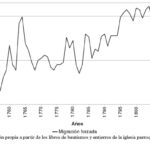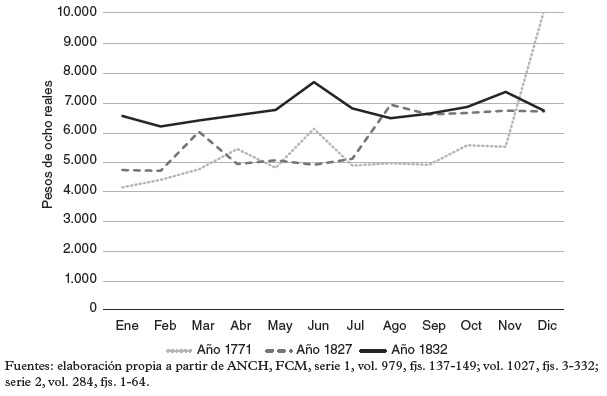
At the end of the seventeenth century, the island of Cuba underwent a series of institutional transformations that resulted in a reformulation of the colonial pact between the local elites and the crown. This series of changes affected the structure of property ownership, agricultural production and the growth and composition of the population, making the island the world’s leading colonial sugar producer. Until the 17th century, the weight of the sugar economy in the province was minimal. The jurisdiction had five mills in 1778 and eight in 1792, producing 1.5% of the island’s total sugar. The migration calculation, through the registration data, shows a very low immigration of slaves. The reasons for this are that the expansion of the agricultural frontier was from Havana towards Matanzas, which means that, if there was immigration, it should have been in this direction, and that the mobility of the slave depended on his owner, so it is expected that the slave population remained in Matanzas with their masters at the time of the sugar expansion. The flow of slave imports in the second half of the 18th century increased tenfold and was marked by strong oscillations. The largest inflows corresponded to an international context of internal transformations that made it possible to increase the black labour force through the slave trade in three periods. In the first period (1775-1785), slave imports seemed to be more sporadic and dependent on external events, such as the British invasion of 1762 and the American War of Independence. During the second period (1785-1795), there was a change in the trend towards a regular increase in forced immigration, and the effect of the French Revolution in Saint Domingue in 1791 led to a smaller influx of slaves. The growth of the curve coincided with medium-term internal transformations, such as the liberation of the slave trade (1789-1798), the application of duties favourable to production, alcabalas or tithes on sugar, coffee, indigo, cotton and the stimulation of the sugar trade, such as the increase in tariffs for free trade between Spain and the Indies. The last period, from 1795-1810, saw a stabilisation of the massive influx of slaves.
Collection: Graphics
Project: 3. Rural world and urban world in the formation of the European identity., 4. Family, daily life and social inequality in Europe., 9. Travels and travelers: economic, social and cultural connections.
Chronology: XVII, XVIII, XIX
Scope: Secondary Education, Baccalaureate, University
Link: https://www.historiaagraria.com/FILE/articulos/RHA76_WEB_urrego_mesa.pdf
Resource type: Graph
Format: Line chart
Source: Urrego Mesa, Alexander, «Cambio institucional y sociedad esclavista: la intensificación del mercado de trabajo esclavo en Matanzas (Cuba), 1755–1810», Historia Agraria, 80 (2018), pp. 49–84.
Language: Spanish
Date: 2018
Owner: Álvaro Romero González (Modernalia)
Copyright: © Alexander Urrego Mesa © Revista de Historia Agraria
Abstract: Fluctuation of forced migration in Matanzas, Cuba, between 1755 and 1810
Image
Tags








